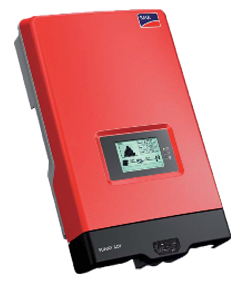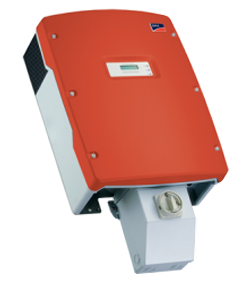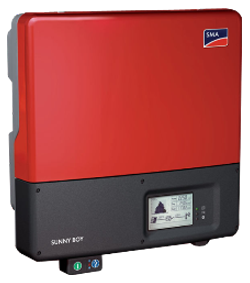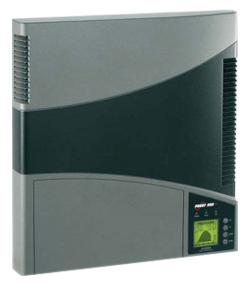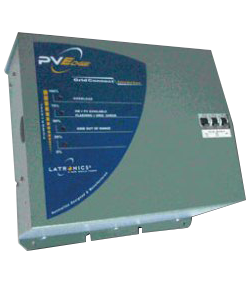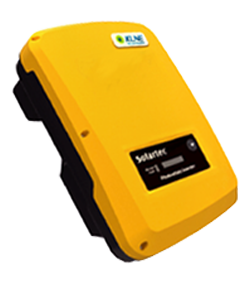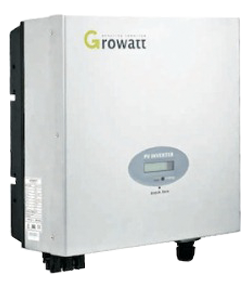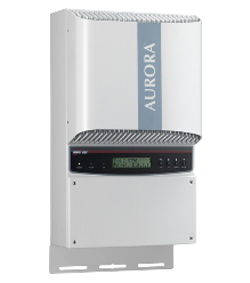The role of the Solar Inverter is to transfer solar energy from an unsafe current of electricity to a safer current of electricity. This is called DC to AC, or direct current to alternating current.
Mounting the solar inverter
Traditionally, the solar inverter is mounted on a wall on the outside of your home near your power board. Alternatively, the solar inverter can be mounted inside your home in the laundry, garage or outdoor shed. This keeps it secure and out of Australia’s harsh weather conditions.
Check out the photo of the solar inverter that has been mounted on the outside of the house, next to the power board.

What size solar inverter do you need?
The solar inverter size is dependent on the wattage (size) of the solar power system that you are aiming to have installed. There are a couple of different options you are likely to come across, so be prepared for the sales pitch.
For example, if you are installing a 3.0kW solar power system on your roof and you do not intend on extending the size of the system, then you would need at least a 3.0kW solar inverter.
If you are installing a 3.0kW system and you intend to expand your solar power system by installing additional solar panels at a later stage, then you can opt to install a solar inverter with a larger capacity, such as 4.0kW or even 5.0kW.
Just be sure that you have the room on your roof for the extra panels before you go getting the biggest inverter.
Solar inverter benefits and features
Most of the inverters on the Australian market are pretty reputable. They all have to pass stringent criteria to meet Australian Standards (AS477). Some of the features you may come across are:
- Transformerless – In most cases, transformerless inverters are much lighter and have a reputation for being more efficient than the alternative.
- Dual Tracking (Dual MPPT) – This is like two inverters built into one. It enables you to have two strings of panels, each facing a different direction. Learn More
- Weather Proof – This is important if you install your inverter outdoors. Especially if you’re exposed to harsh weather conditions or the infamous wet season.
- Compact – As the solar industry becomes more and more competitive, manufacturers are coming up with more unique, convenient designs. This does not necessarily make them a better inverter though.
- Computer Connectivity – For those of you who are tech heads, or have more time on your hands than I do. You can connect your inverter to your home computer or smart phone and monitor your solar energy.
- Warranty – Inverters come standard with a 5 year warranty and most have the option to purchase a further 5 years warranty. Some inverters come standard with a 10 year warranty. Remember, just because it has the longest warranty, it doesn’t mean that it is the most reliable inverter. It is a competitive market.
What is the right solar inverter for you?
Once you have completed our short solar quote request form, three solar companies will get in contact with you to provide you with information and solar panel quotes. From there, you can compare the brands and technologies to find a suitable solar inverter that meets your specific home and personal needs. Be open with the sales reps and installers and let them know what brands you have been quoted. This will open up the topic for discussion.
They should be pretty savvy by now when it comes to inverters and the different technologies.
Keep them on their toes by asking them about the benefits and features.
View the list of CEC approved solar inverters

